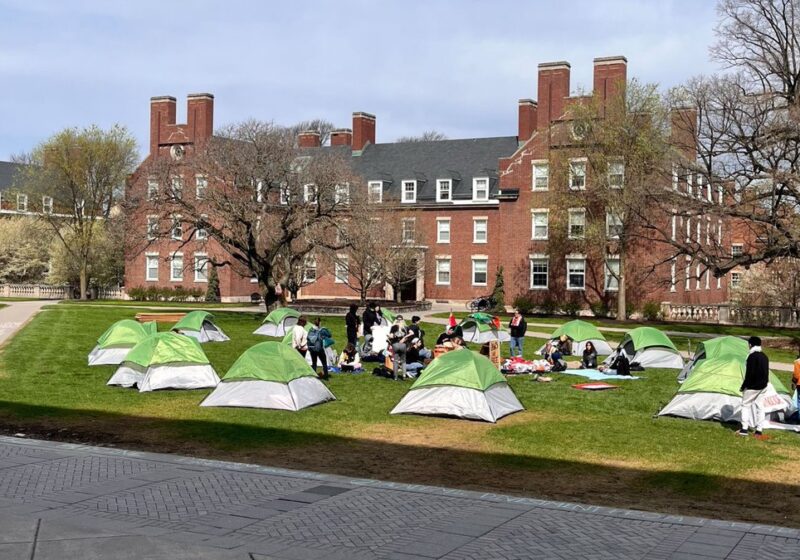The university has announced a new meal plan structure that will drastically redistribute meal costs across the campus community.
This structure, which will go into effect next year, is designed to encourage people to purchase a plan.
It eliminates the fixed cost fee built into the current plans. Students will no longer be required to purchase specific plans based on housing location.
They will have more flexibility when spending block credits. The cash equivalency of a block will increase from $5 to $6 next year.
?We put together a plan we all supported,? Director of Purchasing Quentin Roach said. ?The plan is feasible, flexible and has no initial fixed costs for students.?
Sophomore Lonny Mallach, co-chair of the student dining committee, agreed with Roach?s assessment.
?Every student should now be on a meal plan because they are cheaper than cash and Flex,? he said.
The new plan will have two structures ? one involving a combination of various amounts of declining balance and block credits and another made solely of amounts of declining balance.
Within the combination structure, there will be three different levels.
One involves a combination of 14 meals per week plus $500 of declining balance per year. The second plan incorporates 10 meals per week plus $700 per year. The third plan combines six meals per week with $900 per year in declining balance.
Freshmen will be required to purchase either the 14-meal-per-week option or the 10-meal-per-week plan. The plans cost $3,700 and $3,300 annually, respectively.
Sophomores must either purchase one of the three combination plans or choose the highest declining balance plan. The six-meal combination plan will cost $2,950 annually.
The declining balance plan will now allow juniors and seniors to buy in to the plan at any amount.
Regardless of housing location, upperclassmen could decide to have no meal plan. However, they could add amounts of money to their declining balance option throughout the year.
Bonuses will be given to all students who start the year with $2,400, $1,800 or $1,200 in their declining balance fund. The bonuses decrease with the amount ? $380 (15 percent) for Gold, $180 for $1,800 (10 percent) or $106 (5 percent) for $1,200.
?Besides the benefit of tax-free purchases,? Roach said, ?students will also be rewarded by an additional incentive of extra declining money.?
Students who choose a declining balance of less than $1,200 will not receive a bonus. However, those students ? juniors and seniors who choose a declining balance of $100 or $3 or $800 ? will still receive a total 8 percent discount because they will not have to pay taxes on their plan.
Faculty and staff will also be able to buy plans if they want to, Mallach said.
Students had complained in the past that there was no benefit for being on a meal plan because of the fixed cost associated with the initial purchase. For example, if a student purchased a Premium Declining Balance plan for $3,040 annually, only half of it, $1,520 would translate into declining dollars.
?What you see is what you get,? Roach said. ?There are no hidden costs in any of these plans. The fixed fee, [however], won?t disappear. It will be incorporated into the real cost of food and everyone eating in a dining center will support the overhead costs.?
Students and faculty who weren?t on meal plans didn?t have to pay any of the costs associated with running the dining facility, Roach said.
?That just wasn?t fair,? Mallach said.
Some concern from students was expressed at how much the cost of food will increase because the fixed costs will be factored in to the prices.
?The goal is to keep pricing at a level that is palatable to students and faculty while still keeping costs at necessary levels to adequately run the operations,? Roach said.
Specific pricing is still being worked through, Roach said.
?I don?t think the price will increase a specific percentage on every item,? River Campus Dean of Students and student dining committee co-chair Mary-Beth Cooper said. ?Costs will be spread out on items where we feel prices can increase.?
She added that students will have many avenues to question price levels, such as through the dining committee and forums set up in dining centers over the next month.
Like last year, there will be no refund given at the end of the year for excess declining balance dollars because of New York State tax laws, Roach said.
Mallach was concerned with the apparent lack of flexibility of freshman dining options, especially that they were restricted to purchasing the most expensive options.
?Freshmen have a lot of flexibility under the current system,? Mallach said.
Roach said there were many reasons for requiring freshmen to purchase a meal plan.
Here are the reasons.
Kitchens.
How do student get the info?
Vice President and University Dean of Students Paul Burgett said he couldn?t be happier with the meal plans.
?Students asked for value and flexibility, and that?s what we delivered,? he said.


